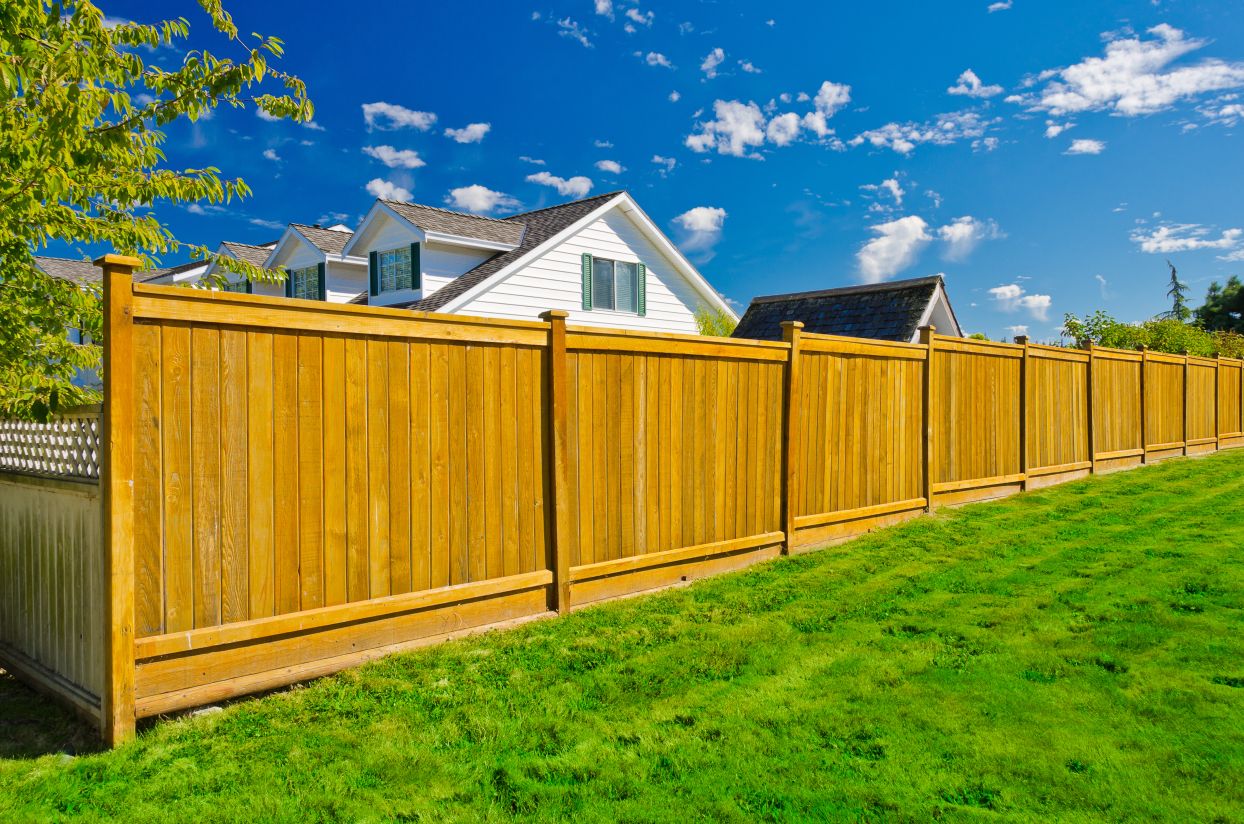Chain Link Vs Wood- Which Is the Better Fence
Chain link vs. wood-which is the better fence? That pretty much depends on what the homeowner is putting the fence up for. Is the fence being installed for privacy and security, for a feeling of protection and solidity, or is it primarily aesthetic in effect and decorative in purpose?
So-chain vs. wood. Which is the better fence? Of the two, wood is definitely the most popular of all fencing materials, since it is both practical (adding a solid and closed-in look to the place) and attractive (depending on the grade, cut and color/staining of the fence). As well, there have been numerous new developments in wood manufacture and cutting, as well as numerous chemical shellacs and additives injected directly into the wood grain, that minimize rotting and warping. Wood fences also are much more efficient in noise reduction, a great consideration if one has neighbors that run motorcycles past midnight. The same developments in wood manufacture that give greater stability also allow for much better insulating properties in a fence's material.
But fences are also for security in terms of providing safe havens for pets and children, as well as keeping out unwelcome guests (usually four-legged ones). For these, and for the sealing and security purposes it offers, one usually will choose a chain-link fence. They will choose a chain link fence because chain link is traditionally associated with security, yet allows visuals that a wood fence cuts off. So the entire question of which fence is better comes down to what the intent and purpose of the fence happens to be.
Both wood and chain link fences are available in different styles. The most popular kinds of wood fence will be cedar, redwood or whitewood, and the styles of wood fencing include picket (with divisions between each board), split-rail (especially rustic and good in rural settings) estate (high and looming wood planks that cover large properties) and wood dip (other materials with "wood-like" coatings that often keep their strength beyond regular wood).
Most chain-link fences allow for a six-foot-high installation, and the fences themselves are available in metallic coat (providing both low cost and high visibility for children and pets), color coats (very good for blending into the environment) and color-coated posts (for end and side, a very stately look for a chain-link). Chain-links should be curved (also known as "knuckled") at their tops to prevent exposure to sharp edges; security fences, naturally, come with a number of non-knuckled options, including barbed wire and spikes.
The chain link is usually much stronger than the wood fence-a 200 pound man should be able to climb over a chain link without damage to the structural integrity. As we said, fences are also for security.
Actual costs of wood vs. chain link depend on the type of fence, the height and length required and the number of opening/gates. It will also depend on whether or not the homeowner hires a contractor for installation, a move which traditionally adds about a thousand dollars to any home improvement project.
Just as an example, a 6 foot residential fence made of chain link will run around $2000 installed, which a color-coated link fence will be closer to $3000 and a privacy-built wood fence close to $4000 at current prices.
The final factor to consider in choosing chain link vs. wood is the maintenance. A wood fence will require a protective finish to maintain its "look", such as paint, stain or waterproofing sealant. Chain-link fences, on the other hand, are virtually maintenance free, but the metal should not rust-if the climate induces that problem, there are several finishes one can use on a chain-link.
That answers, at least in part, the question, "chain link vs. wood-which fence is better?"
Category: Fences - Wood
Business News
Popular Posts
- Universal Pursuit of Happiness - Wisdom from World Religions
- Overcoming Ego and Self-Centeredness - Lessons from World Religions
- Transcending Materialism - Spiritual Practices from World Religions
- Overcoming Prejudice and Intolerance - Guidance from Global Faiths
- How Mind Balance Can Improve the Mindsets of Employees
- Interfaith Insights by 1WorldPeace - The Top 100 Universal Beliefs in Global Spirituality
- Bridging Beliefs - Finding Common Ground in Love and Respect
- The SmartGuy Vision - A United Future Through Interfaith Love and Respect
- A Cautionary Vision - The Grim Future of a Divided World Without Love and Balance
- A Tapestry of Faiths - Exploring the Common Threads in World Religions
- Fostering Harmony Among Christianity Islam Buddhism Hinduism and Judaism
- Preparing Kids for Adulthood - 15 Vital Skills They Wont Learn in School
- Navigating Diversity - Jerusalem's Tactical Approach to Interfaith Harmony
- Clearing Mental Plaque: The Path to Enhanced Communication and Divine Connection
- Why Return to Jesus Christ and the Church
- Top 50 Ways to Live Longer
- Adventurous Romance -The Key to Enhancing Relationship Chemistry
- Pork Tenderloin with Mustard Cream Sauce
- Navigating Technology and Media for Optimal Mental Well-Being
- Understanding the Link Between Mental Health and Substance Abuse
